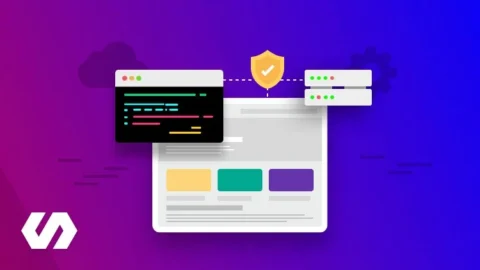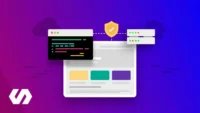
82% Off Microservices with Node JS and React Udemy coupon

Copy this code and use at checkout
82% Off Microservices with Node JS and React Udemy coupon
Expires: No Expires
Submitted: 3 months ago
1. Course Overview and Target Audience
The course, “Microservices with Node and React: E-Commerce Architecture,” is a comprehensive, on-demand video course created by Stephen Grider, designed for Javascript engineers aiming to build large, scalable applications using microservices. It’s explicitly stated that the course is “not designed for sysadmins focused on infrastructure deployment,” indicating its primary focus on software architecture and development rather than pure system administration.
Key Learning Goals:
- Architecting “large, scalable apps using a collection of microservices.”
- Deploying “a multi-service app to the cloud with Docker and Kubernetes.”
- Solving “concurrency issues in a distributed systems environment.”
- Leveraging Javascript skills for complex web app development.
- Building Server-Side Rendered React Apps from microservice data.
- Understanding enterprise infrastructure design.
- Sharing reusable code via custom NPM packages.
- Writing comprehensive tests.
- Communicating data between services using an “event bus.”
- Producing “production-level code. No cutting corners!”
The course is extensive, offering “54 hours on-demand video,” “71 articles,” and “348 downloadable resources,” with full lifetime access and a 30-day money-back guarantee.
2. Addressing the “Hardest Parts” of Microservices
A central theme of this course, and a primary differentiator, is its explicit focus on tackling “the most complex and nasty issues around” microservices. Grider states, “I built this course to fix that. This course tackles every major issues around microservices head on. From challenges with data replication to confusing unordered event streams, every major challenge of building microservices is covered.”
Unlike other resources that “show only the easiest, simplest apps written with microservices,” this course aims to expose students to “the most challenging aspects of microservices, challenges that you will likely encounter every single day.” This practical approach promises to show these difficulties “first hand, then solve them with easy-to-understand strategies.”
The course intentionally avoids “an off-the-shelf microservices framework” because such frameworks “hide the inner workings and challenges of microservices away from you.” Instead, it uses “a minimal number of libraries, and write as much custom code as possible,” to expose students to “challenging problems and clever solutions when handling subjects like async events!”
3. Full-Stack Development with a Specific Technology Stack
The course provides a comprehensive full-stack development experience, covering both frontend and backend aspects.
Key Technologies Used:
- Frontend: React and Next.js (for Server-Side Rendering).
- Backend Services: Node.js and Express.
- Databases: MongoDB and Redis.
- Containerization & Orchestration: Docker and Kubernetes.
- Programming Language: Primarily TypeScript.
Despite this “scary list of technologies,” the course assumes only “Basic knowledge of Javascript and Express is required,” and that “Knowledge of React is good, but not needed.” It assures students that “No other knowledge is needed – you will learn everything you need to know.”
4. Key Concepts and Skills Taught
The course delves into a multitude of advanced topics beyond basic setup:
- Asynchronous & Event-Based Communication: A core emphasis is placed on understanding and solving “the challenges in async, event-based communication between services.” This includes learning to “Write a custom implementation of an event bus” and documenting/enforcing “structure constraints on events shared across microservices.”
- Scalability Patterns: Students will “Practice patterns to create scalable microservices for a variety of app domains” and “Configure and scale your services using Kubernetes Deployments.”
- Architectural Decision Making: The course teaches how to “Determine whether your app is a good fit for a microservices approach.”
- Code Reusability: Emphasizes how to “Organize and enhance the reusability of code in large projects,” specifically mentioning “Share reusable code between multiple Express servers using custom NPM packages.”
- API Management & Security: Covers “Guarantee consistently structured responses from your different API’s” and “Limit access to your APIs using JWT-based authentication.”
- Testing: Stresses the importance of writing “comprehensive tests to ensure each service works as designed.”
- Server-Side Rendering (SSR): Specifically, building “a Server-Side-Rendered React app using Hooks and Next JS.”
5. Instructor’s Philosophy and Experience
Stephen Grider, described as having “an innate ability to simplify complex topics,” aims to provide “the course I wish I had when I was learning microservices. A course that focuses on the hardest parts, gives clear explanations, and discusses the pros and cons of different design options.” His background includes “building complex Javascript front ends for top corporations in the San Francisco Bay Area” and authoring “the highest rated React course” on Udemy. This experience underpins his “invest in yourself by learning from Stephen’s published courses” approach.
Frequently Asked Questions
What is the primary focus of the “Microservices with Node and React: E-Commerce Architecture” course?
The course primarily focuses on teaching how to design, build, deploy, and scale large-scale applications using a microservices architecture, specifically for an e-commerce platform. It emphasizes tackling the most complex and challenging issues associated with microservices, rather than just the basics.
What technical skills and knowledge are required to take this course?
Participants are expected to have a basic understanding of Javascript and Express. While knowledge of React is beneficial, it’s not strictly required. Familiarity and comfort with the command line are also necessary. The course is designed to teach other essential technologies from the ground up, so no prior experience with Docker, Kubernetes, MongoDB, Redis, or TypeScript is assumed.
What kind of application will be built during the course, and what technologies will be used?
The course involves building a full-stack e-commerce application. On the frontend, React and Next.js will be used for presenting content. Each backend service will be developed with Node.js and Express. Data will be stored in either MongoDB or Redis databases. The entire application will be deployed and run within Docker containers orchestrated by a Kubernetes cluster. Additionally, almost all code will be written in TypeScript.
What are some of the key advanced microservices challenges addressed in this course?
The course delves into complex issues such as solving concurrency problems in distributed systems, handling data replication, managing confusing unordered event streams, and implementing asynchronous, event-based communication between services. It also covers strategies for organizing and enhancing code reusability in large projects and best practices for inter-service communication.
How does this course differ from other microservices resources available online?
Unlike many other resources that might focus on simpler applications or hide internal workings using off-the-shelf frameworks, this course takes the opposite approach. It emphasizes a minimal use of libraries and encourages writing custom code to expose students to challenging problems and clever solutions related to subjects like async events. It specifically targets the most difficult aspects of microservices that developers are likely to encounter in real-world scenarios.
What will participants be able to achieve upon completing the course?
Upon completion, participants will be able to architect multi-service applications, determine if a microservices approach is suitable for their app, understand and solve challenges in async event-based communication, deploy multi-service applications to any cloud provider using Docker and Kubernetes, and organize and enhance code reusability in large projects. They will also gain practical experience in building a server-side rendered React app, implementing a custom event bus, and configuring services with Kubernetes Deployments.
Does the course cover full-stack development, or is it solely focused on backend microservices?
The course offers a comprehensive full-stack development experience. It covers both frontend development, including assembling a React app with Hooks, and backend aspects like database design and deployment strategies. This integrated approach ensures a holistic understanding of building and deploying a complete microservices-based application.
Who is the target audience for this course, and who is it NOT intended for?
The course is designed for Javascript engineers who are looking to build large, scalable applications. It is specifically not designed for sysadmins whose primary focus is infrastructure deployment. The emphasis is on software architecture and development challenges within a microservices context.


Loading comments....